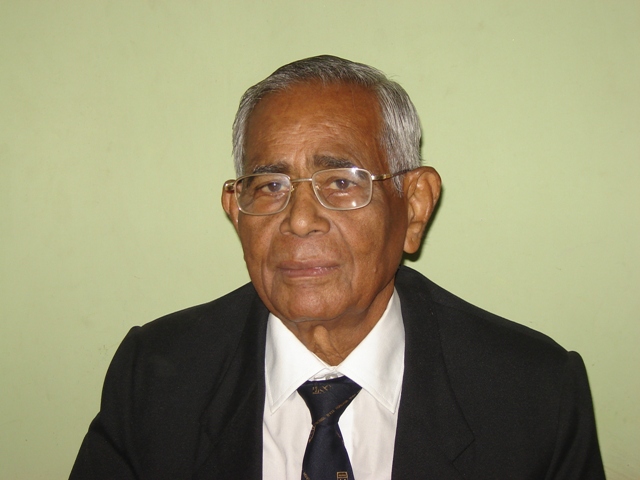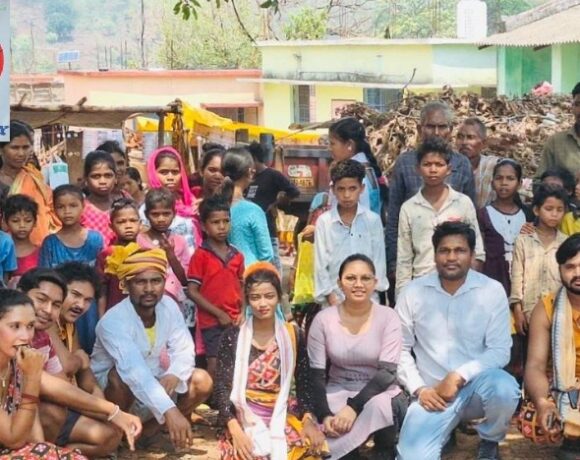Water Resource Management in Mines and Mineral Processing Industries

Prof. Dr. P. K. Jena
Minerals are very important natural resources. These are mined from the earth crust and are used as raw materials in various industries including thermal power plant, iron and steel, aluminium and other non ferrous metals, refractories, cement etc. About 70% of energy we use is thermal power, produced from coal. Huge quantities of various metals and alloys which are used in different industries are all mineral based. Most of the minerals are mined after removing top soil and overburden present over the minerals (opencast mining). Some minerals like coal are mined from underground. High grade minerals are used as such but low grade ones are upgraded by various techniques using a large quantity of water. During mining of minerals a lot of trees are cut and sometimes water bodies are diverted. The environment of the area looks highly disturbed.
Mining and subsequent mineral upgrading activities need a lot of water. The mineral based industries include mineral washing, upgradation, beneficiation and agglomeration of mineral fines, which finally used for extraction of metals and alloys. In these processes, a large amount of water is needed and a lot of waste water is also generated. In most cases, the untreated waste water is let out to nearby water bodies. Therefore, various water conservation measures should be adopted through application of better technology for above processes requiring less amount of water, setting up procedures for budgeting of water, recycling of used water etc. In all these industries, water conservation practices should be adopted in different areas as summarised in the Table – I.
Table – I
Major Water Conservation Practices in Mining and Mineral Processing Industries
- Using fogging nozzle to cool products.
- Installing in – line strainers on all spray headers.
- Adjusting pump cooling and water flushing to minimum required level.
- If Possible utilizing water discharged from one operation in another one.
- Transportation of water with minimum loss.
- Handling of solid materials as far as possible in a dry mode.
- Replacing high volume hoses with high pressure and low volume cleaning systems.
- Turning off all flows during shut downs.
- Adopting sweeping and shoveling practices instead of hosing down the floors.
- Recycling waste water for various purposes including washing of vehicles, watering lawns and dedusting of roads etc.
In view of the fact that most of the river water is earmarked for agriculture and domestic purposes, water needed in mining and subsequent mineral processing should be generated at the sites through rain water harvesting in mine pits and also reusing the waste water if necessary after suitable treatment. Some of this water can be used for plantation on overburden dumped at mine sites and other related activities to maintain the area clean and environment friendly.
The rain water collected in mine pits in active mine areas in a mineral rich country like India, is quite large in volume. The water holding capacity of fresh mine pits created every year in all the mines of India, has been estimated to be around 350 million cubic liters. It has been estimated that, the rain water harvesting in newly created mine pits in India every year, can generate water which is sufficient for meeting domestic consumption of about 30 million people. However, the water available in mine areas has to be suitably treated to meet the requirements of mining, mineral based industries, afforestation of mine areas as well as for agricultural, domestic and other purposes in that region.
The water pollution in mine areas is mainly caused due to solubility of toxic metals and materials, biological impurities, suspended particles, dissolved chemicals etc. For example, in a chromite mine of Sukinda region in Odisha, the mine water is contaminated not only by some of the above impurities but also by chromium along with nickel and cobalt present in the over burden. Similarly, in copper and zinc mines, the sulphide minerals of the two metals undergo bacteria leaching resulting in formation of water soluble acidic sulphates of these two metals.
With rapid increase in mineral based industries in different parts of India, the mining of various minerals has increased considerably. In most of the open cast as well as under ground mines, the water accumulating due to ground water seepage as well as rain water is pumped out for facilating the mining operation. Such untreated water pollutes the existing water sources in the region. In addition to this, the mineral based industries reject their semi treated or untreated effluents and solid wastes to the nearby water bodies. In view of this, the ministry of Environment and Forest, Government of India, has led down some specific norms for mining and mineral based industries to treat and recycle the effluents and harvest rain water to meet most of their water requirements. The objective is to avoid water scarecity for domestic and agricultural purposes while meeting the water requirement of mining and subsequent mineral processing industries.
In view of detoriating environment in most of the mine areas and non-availability of sufficient amount of fresh water for various mining and mineral processing activities, some major mining industries in the world are taking necessary steps to manage the water in their mines through rain water harvesting, storing and treating the used water, in order to meet their requirements.
In India, besides harvesting rain water in mine pits, it is also necessary to recharge the aquifers in the area by rain water in order to increase the ground water resource. For meeting the required amount of water in mining and mineral processing, the concerned companies should harvest rain water in mine pits and save used water and finally utilise these after proper treatment in their industries. The Central Ground Water Board, Govt. of India, has prescribed certain norms in water management in mining and mineral processing units which are summarized in Table – II. In this way there may not be much shortage of water for mining and mineral processing activities.
Table – II
Water Management in an Integrated Mine and Mineral Processing Complex
| Sl. No. | Activities | Water Quality |
| 1 | Spraying of minerals and overburden | As such |
| 2 | Upgradation of minerals and agglomeration of ore fines | After removal of solid particles, dissolved salt and heavy metals |
| 3 | Plantation in mine areas | As for (2) |
| 4 | Pisci – culture | After proper treatment |
| 5 | Domestic purpose | After removal of dissolved salts, heavy metals, grease, oil, organics etc. |
In view of non-availability of sufficient amount of fresh water for mining and mineral processing activities and also for avoiding detoriating environment in most of the mine areas, some major mining industries of India are taking necessary steps to meet the required amount of water in their activities through rain water harvesting, storing and using the treated water. As a matter of fact, all the mining and mineral processing units in the country for their own interest should go in same way.
(The writer is Ex-Director General, CSIR. He is at present the Chairman of Institute of Advance Technology & Environmental Studies (IATES). He can be reached at prof.pkjena_iates@yahoo.com)







